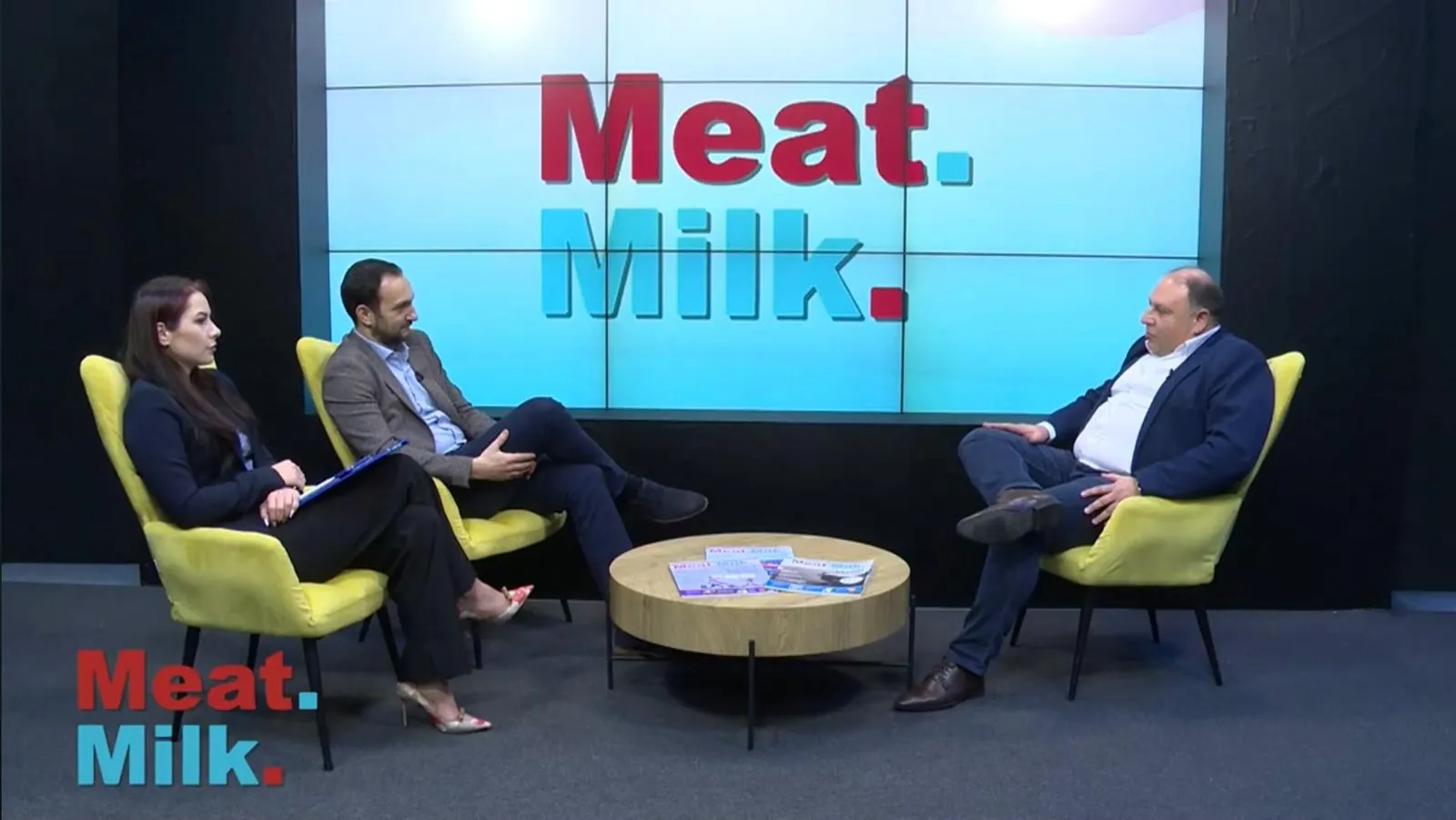1655

Cottage cheese is experiencing growth in both volume and price, positioning the category for innovation. But are producers taking advantage of this? DairyReporter explores this question.
Rapid Growth
According to Circana, cottage cheese was the third fastest-growing segment of edible dairy products in the EU in 2023, with a double-digit growth rate of 11.7% and a single-digit growth in private label sales of 5.7%. In 2024, the category continues its upward trajectory: as of May 19, 2024, volumes increased by 13.5%, and prices rose by 16%.
This growth comes at a time when dairy prices have started to moderate, although cottage cheese prices have increased by 2.2% in terms of dollar price per volume.
What Does This Mean?
“The category is still doing very well, and this has been consistent over the last two and a half to three years,” explained John Crawford, SVP of Circana for customer insights for dairy products. “In real per capita consumption, it has grown by about 3.5% per year and is now at about 4.25% per year. This is quite strong growth – you're getting nearly a full meal per capita per year.”
In terms of household penetration, 45% of American households today buy cottage cheese, he added. “That has increased by 2%.”
Social Media's Role in Making Cottage Cheese Cool
The appeal of cottage cheese has risen in recent years as consumer awareness of health and nutrition has grown. A natural low-calorie, high-protein snack, cottage cheese ticks many boxes. But it was in 2023 that the category grew exponentially, largely thanks to TikTok.
It may be hard to imagine that a lumpy, sour-tasting dairy product would become a social media sensation. However, this is precisely what happened when TikTok foodies started sharing their unique recipes for cottage cheese ice cream.
Using it to inject protein and other nutritious ingredients into an otherwise indulgent frozen dessert, the cottage cheese ice cream trend played a major role in boosting the segment.
“Not just dollars are driving growth or pricing; it was absolutely used, and social media gave consumers new ways to use this product,” Crawford from Circana told us.
“It was social media driving and lifting an entire category. It’s something I didn’t think was possible, but now I know it is.”
“I always tell brands, if you find another use for your product, you can drive your entire brand,” he added. “In the case of cottage cheese, you can see that at-home consumption has increased because TikTok told consumers how to use the product [creatively].”
And although it started as a fad, the sustained growth of the category suggests that cottage cheese purchasing has become a long-term trend in dairy products.
Are Food Producers Capitalizing on This?
Crawford told us that most cottage cheese sales in the US are generated by private labels (36%) and brands Daisy (20%) and Good Culture (10%); these three players are also the main producers of the category in terms of volume. “Private labels, Daisy, and Good Culture are seeing tremendous growth; they are the ones really driving the overall growth of the category,” Crawford said.
However, despite its recent growth, the segment remains the second smallest in the top 15 dairy categories that Circana tracks, behind categories like cream, whipped toppings, cream cheese, dips, and butter, with fluid milk and yogurt being the largest-selling dairy categories in the EU. Thus, the market size of cottage cheese makes product innovation risky.
How Are Cottage Cheese Producers Innovating?
“When we talk about innovation, I mean, there is some,” Crawford said. “There has been some innovation around fruits, for example. Pineapple is the biggest flavor by far outside of plain. Daisy came up with fruits on the top – packed inside a lid – that the consumer can mix in; other brands have played around with fruits on the bottom.”
Texture has also been of interest to those looking to attract new consumers to this category, with Kemps launching smooth cottage cheese, Crawford explained.
“Some consumers don’t like curds. The interesting thing with Kemps is that they not only came out with smooth cottage cheese, but they also launched it in kids’ packs, branded with popular cartoon characters like Transformers and Peppa Pig.
“Those didn’t do much, but I think it was an interesting dynamic to market cottage cheese to children.”
Overall, the level of innovation boils down to fruits (mostly pineapple), curd size (small and large), and fat content (low, full, and fat-free). Savory options like chives “don’t really take off” at the retail level, Crawford told us.
However, on TikTok, social media users are experimenting with adding cookie dough and mustard to cottage cheese, suggesting an appetite for unusual and savory flavors.
“I think there is an opportunity here, but because the category is so small, most of the category will be the traditional plain, low-fat, larger size,” Crawford said. “For flavors, it becomes a long-tail business down the road; pineapple has had success, but the rest, not so much. So it’s hard for a brand to innovate around a category that is still pretty small.”
He added that both brands and private labels face the same production challenges, such as whether to invest in dedicated production lines to make flavored cottage cheese, likely at lower volumes, and this is before setting the price and assessing the target market.
Category Evolution: From Digestive Claims to Attracting Gen Z
But while the category size seems to be a barrier to innovation, there is one thing that food producers can leverage right now: marketing.
“Marketing cottage cheese is still quite basic,” Crawford said. “Protein is probably the main claim we see, but there isn’t much around calcium, for example. We don’t see anything around probiotics either, and certainly, in dairy, digestive claims are winners. However, we don’t see that with cottage cheese. Potentially, this is a missed opportunity.”
“Instead of innovating around products, producers should innovate around claims.”
In terms of European consumers purchasing cottage cheese, older generations, namely boomers and retirees, purchased the largest volume of cottage cheese in the last year, up to May 19, 2024, according to Circana, followed by Generation X, Millennials, and Generation Z.
However, Gen Z and Millennial consumers have bought more cottage cheese in the last year, with Gen Z recording double-digit growth in purchases.
Will the Cottage Cheese Segment Continue to Grow?
While consumers have come up with innovative ways to use cottage cheese, producers have not entered the market with, for example, cottage cheese ice cream, and it is “clear” to see why.
“It’s very hard for a producer to launch mustard-flavored cottage cheese because it comes down to whether consumers actually buy the product,” Crawford said.
“Cottage cheese is quite versatile, which is where the consumer benefit comes in. The versatility of use is what becomes really important, the ideas behind how consumers actually use this product are more important.”
So, how does the US cottage cheese market look for the rest of 2024? Crawford told us he has no official projections but expects growth to continue, likely in single digits.
“I don’t know if it will sustain double-digit growth, but I expect it to continue to be a bright spot in the dairy sector,” he explained. “I’d probably expect it to remain in single-digit terms for the rest of the year, and I don’t think we’ll start seeing declines.”
As the federal government seeks to ban TikTok in the US, would that affect cottage cheese sales? “I don’t think that will matter,” said Circana’s SVP for customer insights-dairy. “There are plenty of other platforms. Plus, cottage cheese is now in the consumer buying cycle, so I think it will remain.”
Regarding household penetration, a sharp increase is unlikely, he added, say from 45% to 60%. But single-digit growth is on the cards. (Photo: Freepik)





